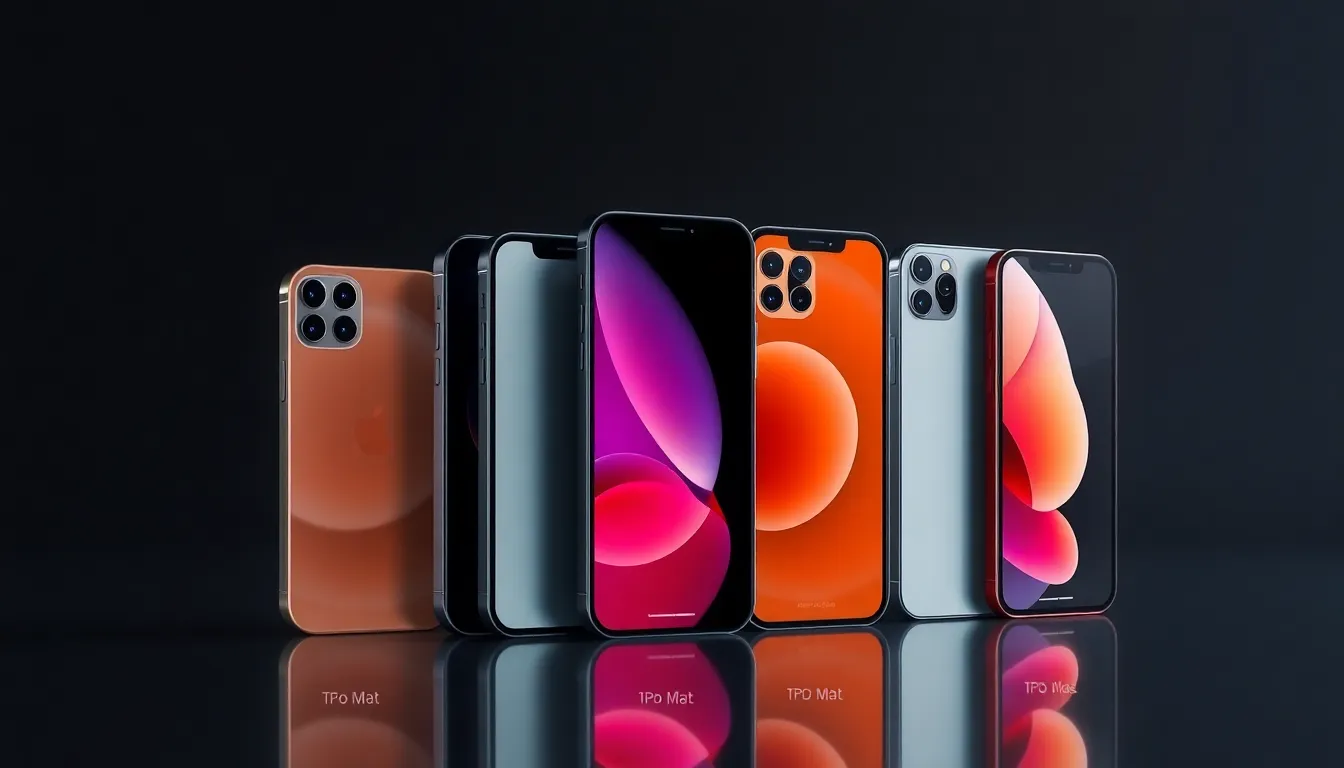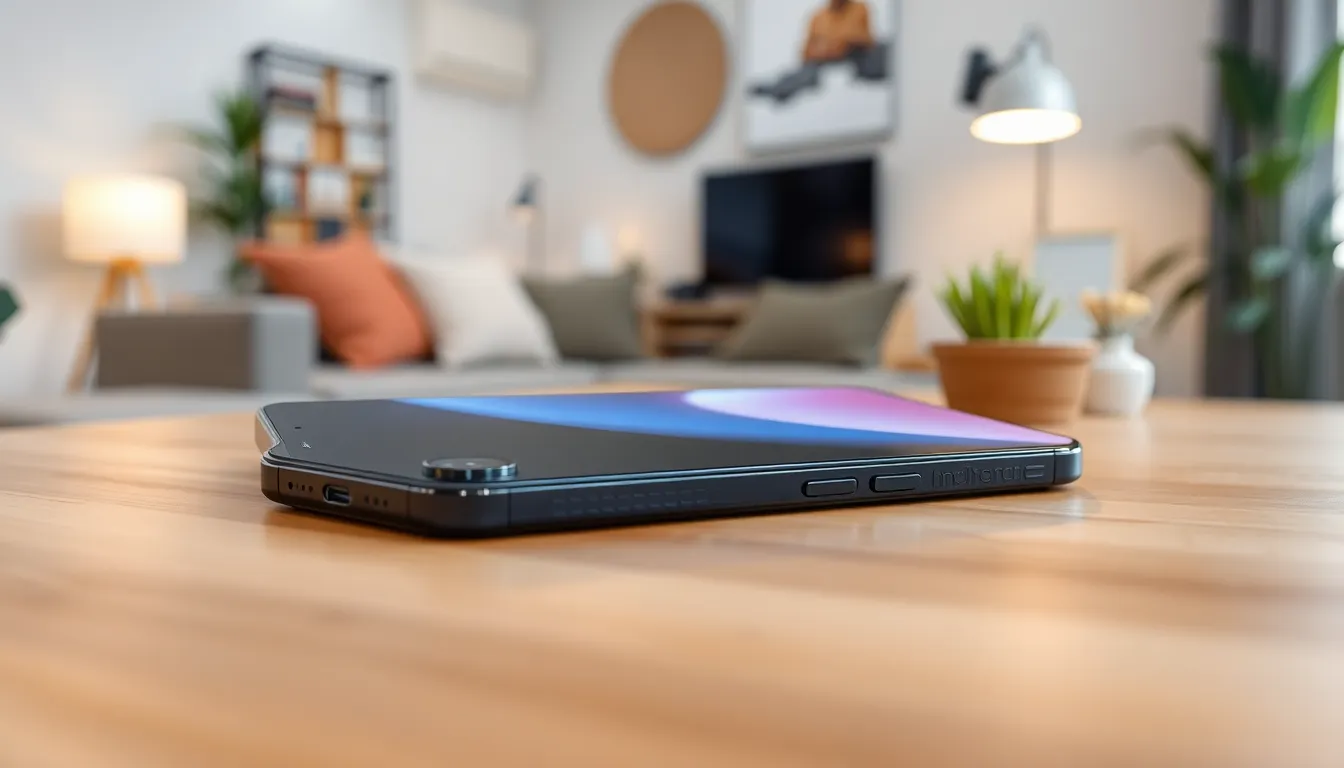When it comes to iPhones, size matters—especially if you want to flaunt the latest tech with a touch of flair. Ever wondered which iPhone holds the title for the widest? Spoiler alert: it’s not just about bragging rights. The width of a phone can impact everything from your grip to how you navigate those endless TikTok scrolls.
Table of Contents
ToggleOverview of iPhone Widths
Width plays a crucial role in the overall design and usability of iPhones. Various models feature different widths, impacting user experience in significant ways. The iPhone 14 Pro Max, which measures 3.46 inches wide, holds the record for the widest iPhone currently available. Users benefit from this width during interactions, making tasks like typing and scrolling more comfortable.
Previous models, such as the iPhone 13 Pro Max and iPhone 12 Pro Max, also have substantial widths, measuring 3.46 inches and 3.07 inches, respectively. These dimensions allow for better visibility and control when engaging with apps or content. With each new release, Apple tends to fine-tune the width, ensuring it aligns with user preferences.
Not every model maximizes width. For instance, the iPhone SE (2nd generation), at 2.65 inches wide, offers a compact design, appealing to those who prefer smaller devices. It illustrates how width affects portability and ease of use for different user demographics.
Specifically, widths can influence how people navigate and interact. A wider phone can enhance the experience during multitasking or media consumption. In contrast, narrower models may suit those seeking convenience for one-handed use.
Recognizing the diversity in iPhone widths encourages users to consider their needs. Whether opting for a broader model for enhanced functionality or a narrower one for portability, understanding the variations can lead to informed choices.
The Journey of iPhone Widths Over the Years

The evolution of iPhone widths reflects user preferences and technological advancements. Understanding this journey reveals how design influences functionality.
Early Models
Early iPhones featured narrower widths that aligned with the design trends of the time. The original iPhone measured 2.5 inches wide, and this compact size catered to a growing market for smartphones. Subsequent releases, like the iPhone 3G and iPhone 4, maintained similar dimensions, emphasizing portability and ease of use. Wider models began appearing with the iPhone 6, which measured 2.64 inches. This transition marked a shift towards accommodating larger screens, enhancing user interactions.
Recent Releases
Recent models showcase a clear trend toward increased width, improving user experience for various activities. The iPhone 12 Pro Max expanded to 3.1 inches, allowing greater visibility during media consumption. Following this, the iPhone 13 Pro Max continued the trend, measuring 3.46 inches wide. This model enhanced navigation and multitasking capabilities. The current generation, represented by the iPhone 14 Pro Max, holds the record for width, consistently prioritizing user engagement through design innovation.
What Is the Widest iPhone?
The widest iPhone currently available is the iPhone 14 Pro Max, measuring 3.46 inches wide. This width enhances usability during tasks like typing and scrolling, making the device user-friendly.
Current Widest Model
The iPhone 14 Pro Max stands out with its impressive dimensions. Measuring 3.46 inches wide, it offers a spacious display that improves visibility and control. Users benefit from the increased screen real estate, particularly for multitasking and media consumption. This change aligns with modern preferences for larger screens, providing users with a more engaging experience.
Comparison with Other Models
Other models, like the iPhone 13 Pro Max and iPhone 12 Pro Max, follow closely behind, measuring 3.46 and 3.06 inches in width, respectively. Both models facilitate easy navigation and interaction. In contrast, the smaller iPhone SE (2nd generation) measures 2.65 inches wide, catering to individuals who prefer a more compact device. Preferences vary considerably; wider models are ideal for those who engage in extensive content consumption, while narrower options appeal to those seeking portability and convenience.
Factors Influencing iPhone Width
The width of an iPhone significantly impacts user experience. Various factors contribute to the design and dimensions of these devices, particularly the aspect of width.
Design Considerations
Overall aesthetics shape the design of iPhones. Engineers and designers prioritize not only beauty but also functionality. The iPhone 14 Pro Max measures 3.46 inches wide, promoting comfort during tasks like typing and scrolling. Wider models accommodate larger batteries, enhancing device longevity. Enhancements in display technology also play a role; larger screens offer better visibility. Additionally, materials used in construction affect the grip, further influencing user interaction. Wider designs align with contemporary trends, allowing for effective multitasking.
User Preferences
User preferences drive the evolution of iPhone widths. Different users prioritize specific features based on their habits. Some prefer the compactness of devices like the iPhone SE (2nd generation), measuring 2.65 inches wide, while others embrace the larger widths of models like the iPhone 14 Pro Max. Factors such as portability and ease of use play significant roles in these choices. Individuals leaning towards media consumption or multitasking gravitate towards wider options. Convenience for one-handed use remains essential for many users. Varied preferences continue to shape Apple’s design strategies, appealing to a diverse audience.
The evolution of iPhone widths reflects changing user preferences and technological advancements. The iPhone 14 Pro Max stands out as the widest model at 3.46 inches, enhancing usability for tasks like multitasking and media consumption. This trend toward larger devices caters to users seeking improved visibility and control.
As Apple continues to innovate, the diversity in iPhone widths ensures that there’s a model for everyone. Whether users prefer the spaciousness of wider phones or the convenience of more compact designs, the choice ultimately hinges on individual needs and usage habits. This ongoing development in iPhone design not only prioritizes user engagement but also sets the stage for future innovations.




